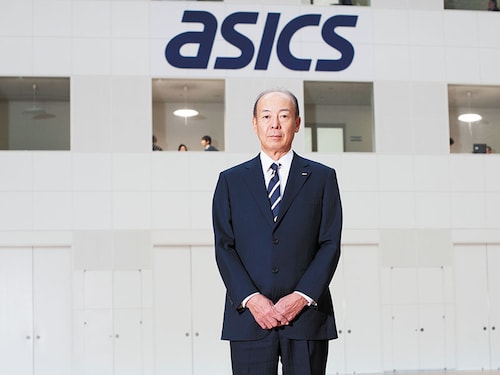Indians have now taken to fitness, sports: Asics president
Yasuhito Hirota, the president and global COO of sports performance brand Asics, talks about the brand's re-entry into India, and why it's not just about running shoes



Yasuhito Hirota Q. You took over as the Asics global head this March. What are your primary agendas of business?
Asics was growing globally till 2015, but plateaued since then. My agenda is to resume the phase by 2020. Our big markets used to be the US, Europe and Japan. But those have matured. Our next target is to tap the markets in China, India and Indonesia. These are big-population countries with a rising GDP and interest in sports. So we want to focus on them to push growth. At the same time, we’ll have to bring back market share in the US and Europe. As of December 2017, our global turnover is JPY 400,157 million ($3.6 billion). By 2020, our target is to reach JPY 500,000 million ($4.5 billion), which is over 25 percent growth in three years.
Q. You entered the Indian market in 2010 through a five-year partnership with Reliance Retail, and then set out independently in 2015. What’s been your assessment?
In 2010, the market wasn’t mature enough for performance products. So, we signed up a deal with Reliance Retail [a subsidiary of Reliance Industries which publishes Forbes India] to test the markets. But in the last six to seven years, more and more people are going to gyms, more marathons are taking place and people have technological know-how. There is a shift in consumer mindset they now understand the role of sports in their lives. In 2015, the Asics headquarters in Japan realised the demand has been created, the share of running has increased and the overall sports market has improved. That’s why we decided to go it alone. From our first store in Delhi’s Select Citywalk mall, we now have 34 stores in tier 1 and 2 cities.
Q. What are the expansion plans?
This year, we’ve added more than 10 stores in 10 months. India is primarily a mono-brand store-centric country. Maximum sale happens through these stores. We’ll primarily use this channel for growth. And the other path would be through ecommerce channels. This year, about 20 percent of our sales in India were through them and we want to hold on to those figures in the next four to five years.
Q. How is the brand positioned in India?
Globally, and in India, we have positioned Asics as a true sports performance brand. Our journey in the last two to three years in this segment has been good and, in India, we have grown at a CAGR of over 30 percent. We are also developing the athleisure segment to tap the mass market.
Q. How would you take on the likes of Nike, Adidas, Reebok in India?
Our USP globally is a performance product. Puma is more of a lifestyle brand. Nike is a bit of performance and a bit of lifestyle, so is Adidas. So our positioning is different. Second, our only strength is the product. The Adidas’ and the Nikes of the world spend a lot on marketing. We invest a lot in the product, so that once a customer uses a product, he will be loyal to us.
Q. The brand philosophy for Asics is a “sound mind in a sound body”. What initiatives are you taking to pursue it?
Asics has a long heritage in sports. This is the founding philosophy of the company instituted by the founder Kihachiro Onitsuka in 1949. The brand connect that he did with consumers is that sports has the power to change lives. This was to bring happiness to the Japanese people reeling from the after-effects of the Second World War. Close to 70 years later, we still hold the same brand values. We want to ensure a quality lifestyle for our consumers with every design or innovation that we bring.
To that end, we launched the ‘I Move Me’ campaign last year to inspire consumers to play sports. We have five running clubs in India with training sessions twice a week. The idea is not to sell Asics, but to train people for half- and full-marathons.
First Published: Nov 05, 2018, 12:55
Subscribe Now